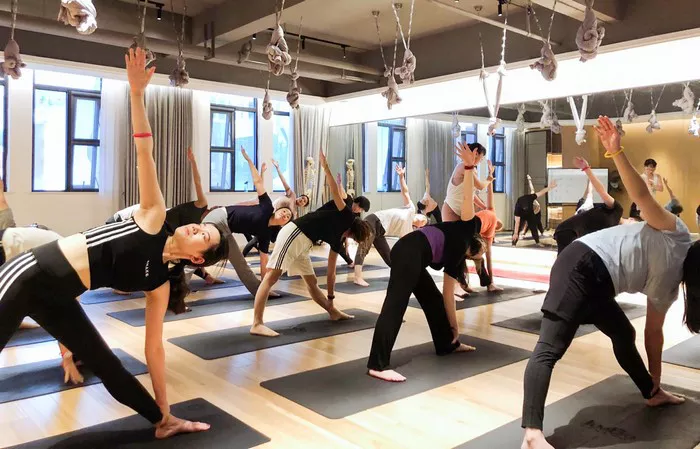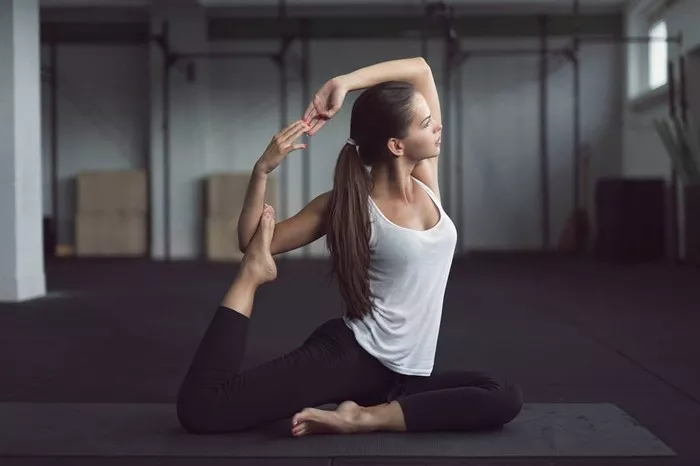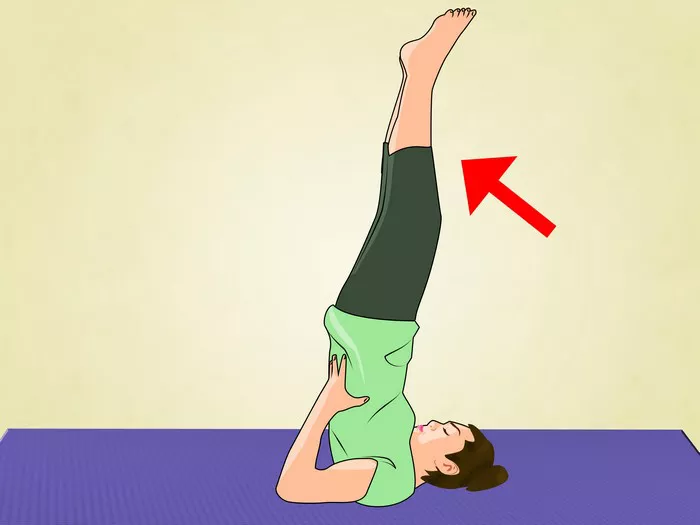In the bustling world of modern fitness and wellness practices, yoga stands out as a timeless discipline that offers both physical and mental benefits. Within the vast realm of yoga styles, Vinyasa Yoga has gained significant popularity for its dynamic movements and synchronized breathwork. Originating from the Sanskrit word “nyasa,” meaning “to place,” and “vi,” meaning “in a special way,” Vinyasa Yoga embodies a harmonious flow of postures that seamlessly transition from one to another, guided by the breath. In this article, we delve into the essence of Vinyasa Yoga, exploring its history, principles, benefits, and how practitioners can incorporate it into their lives.
Origins and Evolution
Vinyasa Yoga traces its roots back to the ancient teachings of yoga, with influences from the classical Hatha Yoga tradition. However, it wasn’t until the late 20th century that Vinyasa Yoga gained prominence, thanks to influential teachers such as Sri T. Krishnamacharya, T.K.V. Desikachar, and Pattabhi Jois. These pioneers played a pivotal role in shaping Vinyasa Yoga into the dynamic and fluid practice known today.
One of the most significant developments in the evolution of Vinyasa Yoga came through the introduction of Ashtanga Vinyasa Yoga by Pattabhi Jois. Ashtanga Vinyasa Yoga follows a specific sequence of postures linked together by breath, creating a vigorous and disciplined practice. From Ashtanga, the concept of “Vinyasa flow” emerged, emphasizing the seamless transition between poses with a continuous and conscious breath.
Over time, Vinyasa Yoga evolved beyond the rigid structure of traditional sequences, allowing for greater creativity and variation in sequencing. Contemporary Vinyasa classes often blend elements of Ashtanga Yoga with other styles, incorporating diverse movements, music, and spiritual elements to create a holistic and personalized experience for practitioners.
Principles of Vinyasa Yoga
At the heart of Vinyasa Yoga lies the principle of synchronizing movement with breath, known as “Vinyasa Krama.” Each movement flows gracefully into the next, guided by the inhales and exhales of the breath. This rhythmic flow creates a moving meditation, fostering a deep connection between mind, body, and breath.
Central to the practice of Vinyasa Yoga is the concept of “Ujjayi breath,” often referred to as “ocean breath” or “victorious breath.” Ujjayi breath involves gently constricting the back of the throat to create a soft whispering sound, akin to the sound of ocean waves. This controlled breathing technique not only helps to regulate the pace of movement but also generates internal heat, purifying the body and calming the mind.
In addition to breath control, Vinyasa Yoga emphasizes the importance of proper alignment and mindful movement. Each pose is executed with precision and awareness, with a focus on maintaining stability and integrity throughout the practice. Practitioners are encouraged to listen to their bodies, honoring their limits while exploring their edges with compassion and curiosity.
Benefits of Vinyasa Yoga
The practice of Vinyasa Yoga offers a myriad of physical, mental, and emotional benefits that contribute to overall well-being. From increased strength and flexibility to enhanced focus and stress reduction, Vinyasa Yoga has something to offer for practitioners of all levels.
1. Physical Strength and Flexibility: The dynamic nature of Vinyasa Yoga sequences challenges the body to engage multiple muscle groups, building strength, and improving flexibility over time. Regular practice can lead to greater muscle tone, improved posture, and increased range of motion.
2. Cardiovascular Health: The continuous flow of movement in Vinyasa Yoga raises the heart rate, promoting cardiovascular health and circulation. This cardiovascular aspect of the practice helps to improve endurance and stamina while burning calories and supporting weight management.
3. Stress Reduction and Mental Clarity: The mindful combination of breath and movement in Vinyasa Yoga serves as a powerful tool for stress reduction and relaxation. By syncing breath with movement, practitioners cultivate a sense of presence and mindfulness, quieting the chatter of the mind and fostering mental clarity and focus.
4. Emotional Balance and Resilience: Vinyasa Yoga encourages practitioners to cultivate a sense of equanimity and acceptance on the mat, which can translate into greater emotional resilience off the mat. Through the practice of surrendering to the flow and embracing the present moment, individuals develop the capacity to navigate life’s challenges with grace and ease.
5. Spiritual Connection: While Vinyasa Yoga is often approached as a physical practice, it also holds deep spiritual roots. The rhythmic flow of breath and movement serves as a gateway to deeper states of consciousness, allowing practitioners to tap into their inner wisdom and connect with something greater than themselves.
Incorporating Vinyasa Yoga into Your Life
Whether you’re a seasoned yogi or a newcomer to the practice, integrating Vinyasa Yoga into your daily routine can have profound effects on your overall well-being. Here are some tips for incorporating Vinyasa Yoga into your life:
1. Start Slowly: If you’re new to Vinyasa Yoga, begin with beginner-friendly classes or online tutorials that focus on foundational poses and proper alignment. Take your time to familiarize yourself with the breath and movement before progressing to more advanced sequences.
2. Practice Regularly: Consistency is key when it comes to reaping the benefits of Vinyasa Yoga. Aim to practice at least a few times a week, even if it’s just for a short duration. Set realistic goals and gradually increase the duration and intensity of your practice as you build strength and confidence.
3. Listen to Your Body: Pay attention to how your body feels during practice and honor its needs accordingly. Modify poses as needed, and don’t push yourself beyond your limits. Remember that yoga is a journey of self-discovery, and progress is measured not by how deep you can go into a pose but by how deeply you connect with yourself.
4. Explore Variation: Vinyasa Yoga offers endless opportunities for creativity and exploration. Don’t be afraid to experiment with different styles, teachers, and sequences to find what resonates with you. Embrace the fluidity of the practice and allow yourself to flow with whatever arises in each moment.
5. Cultivate Mindfulness Off the Mat: The lessons learned on the mat can be applied to everyday life. Practice mindfulness and presence in your daily activities, bringing the same awareness and intentionality to your interactions, work, and leisure time. By embodying the principles of Vinyasa Yoga off the mat, you can cultivate a more balanced and harmonious life.
Conclusion
In conclusion, Vinyasa Yoga offers a dynamic and transformative path to physical, mental, and spiritual well-being. Through the seamless integration of breath and movement, practitioners unlock the flow of vitality and vitality, connecting with their inner selves and the world around them. Whether you’re seeking strength, flexibility, stress relief, or spiritual growth, Vinyasa Yoga invites you to dive deeper into the rhythm of life and discover the boundless potential within.
FAQs:
How many calories burned in Vinyasa Yoga?
The number of calories burned in Vinyasa Yoga varies depending on factors such as the intensity of the practice, duration, and individual body composition. On average, a 60-minute Vinyasa Yoga session can burn between 300 to 500 calories. However, this estimate may be higher for more vigorous classes or sequences that involve continuous movement and flowing sequences.
Is Vinyasa Yoga cardio?
Yes, Vinyasa Yoga can provide cardiovascular benefits, especially when practiced with a continuous flow of movement and synchronized breathwork. The dynamic nature of Vinyasa sequences raises the heart rate, promoting cardiovascular health and endurance. Incorporating elements such as Sun Salutations and faster-paced transitions can further enhance the cardiorespiratory aspect of the practice. However, the intensity of the cardio workout in Vinyasa Yoga may vary depending on factors such as the individual’s fitness level and the intensity of the practice.
















